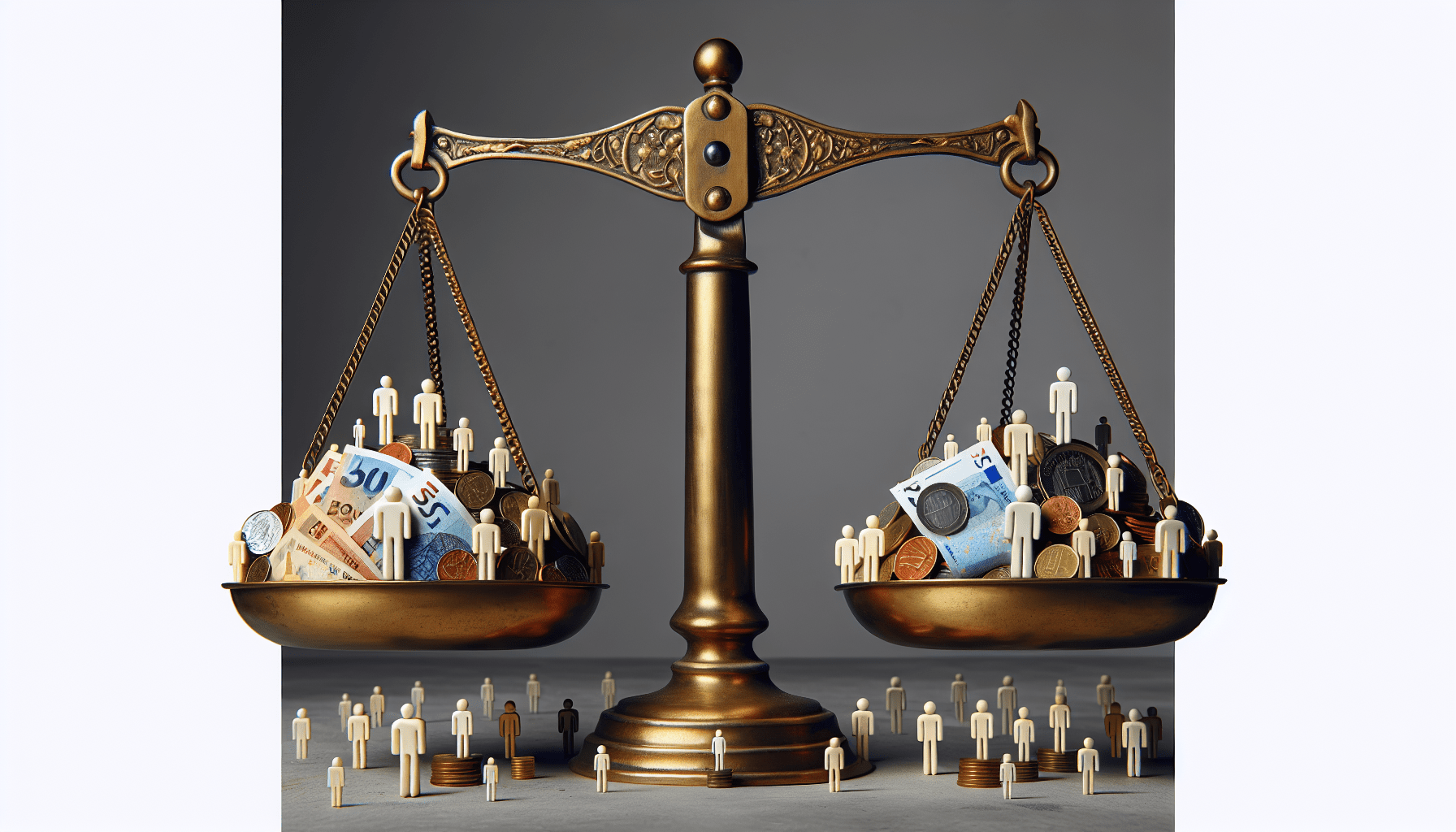Have you ever wondered how changes in consumer behavior could affect your business financially? Whether it’s shifting trends in buying habits, preferences for certain products, or even the way customers interact with your brand, these changes can have a significant impact on your bottom line. Understanding and adapting to these shifts in consumer behavior is crucial for the long-term success and sustainability of your business. By staying informed and proactive, you can navigate these changes effectively and continue to thrive in an ever-evolving market landscape. What Are The Potential Financial Impacts Of Changes In Consumer Behavior On My Business?
What are the potential financial impacts of changes in consumer behavior on your business? Let’s explore the various ways in which shifts in consumer preferences and behaviors can affect your bottom line.
Understanding Changes in Consumer Behavior
Consumer behavior plays a significant role in shaping the success of your business. The way people choose to spend their money, the products they prefer, and the channels they use to make purchases can all impact your company’s financial performance. By understanding these changes, you can adapt your strategies to meet consumer needs effectively.
Changes in consumer behavior can be influenced by various factors, including economic conditions, technological advancements, cultural shifts, and social trends. Keeping a close eye on these changes can help you anticipate shifts in demand and stay ahead of the competition.
Economic Conditions
Economic conditions, such as inflation, unemployment rates, and GDP growth, can significantly impact consumer behavior. During periods of economic uncertainty, consumers may cut back on discretionary spending, leading to a decrease in sales for businesses that sell non-essential goods and services.
On the other hand, during booming economic times, consumers may be more willing to splurge on luxury items, travel, and entertainment. Understanding how economic conditions affect consumer behavior can help you adjust your pricing strategies, product offerings, and marketing campaigns to align with changing consumer preferences.
Technological Advancements
Technological advancements have transformed the way consumers shop and interact with businesses. The rise of e-commerce, mobile shopping apps, and social media platforms has made it easier for consumers to compare prices, read reviews, and make purchases online.
As a business owner, it’s essential to stay abreast of the latest technological trends and adopt innovative strategies to engage with tech-savvy consumers. Investing in a user-friendly website, mobile app, or online advertising campaign can help you reach a broader audience and attract new customers.
Cultural Shifts
Cultural shifts, such as changing demographics, values, and lifestyles, can also influence consumer behavior. For example, younger generations may have different preferences and expectations than older consumers, leading to shifts in demand for certain products and services.
By understanding cultural trends and consumer preferences, you can tailor your marketing messages, product designs, and customer service initiatives to resonate with your target audience. Adapting to cultural shifts can help your business stay relevant and appeal to a diverse customer base.
Social Trends
Social trends, such as sustainability, wellness, and social responsibility, have become increasingly important to consumers. Many people are now looking for products and brands that align with their values and support causes they care about.
As a business owner, you can capitalize on these social trends by adopting eco-friendly practices, promoting community involvement, and supporting charitable organizations. By showcasing your commitment to social responsibility, you can attract socially-conscious consumers and build a loyal customer base.
Impact on Sales Revenue
Changes in consumer behavior can have a direct impact on your sales revenue. When consumer demand for your products or services declines, your sales may decrease, leading to a drop in revenue. Conversely, if consumer preferences shift in favor of your offerings, your sales revenue may increase.
To assess the impact of changes in consumer behavior on your sales revenue, you can track key performance indicators, such as sales volume, average transaction value, and customer acquisition costs. By monitoring these metrics regularly, you can identify trends and patterns that may indicate shifts in consumer behavior.
In some cases, changes in consumer behavior may result in seasonal fluctuations in sales revenue. For example, a retailer that sells winter clothing may experience a surge in sales during the colder months and a decline in sales during the summer. By forecasting seasonal trends and adjusting your inventory levels accordingly, you can optimize your sales revenue throughout the year.
Analyzing Customer Segments
To better understand the impact of changes in consumer behavior on your sales revenue, you can analyze your customer segments and identify their preferences, buying habits, and purchasing power. By segmenting your customer base into different groups based on demographic, psychographic, or behavioral factors, you can tailor your marketing strategies to meet the needs of each segment effectively.
For example, if you notice that younger customers prefer to shop online and use mobile payment apps, you can focus your marketing efforts on digital channels and offer incentives for online purchases. By catering to the unique preferences of each customer segment, you can increase sales revenue and enhance customer satisfaction.
Adjusting Pricing Strategies
Changes in consumer behavior can also influence your pricing strategies and profit margins. If consumers are price-sensitive and value-conscious, you may need to lower your prices or offer discounts to attract price-conscious shoppers. On the other hand, if consumers are willing to pay a premium for high-quality products or exceptional customer service, you can price your offerings accordingly and maximize your profit margins.
By conducting pricing experiments, analyzing competitor pricing strategies, and monitoring consumer feedback, you can determine the optimal price points for your products and services. By striking the right balance between pricing and value, you can maximize your sales revenue and profitability while meeting consumer expectations.
Impact on Marketing and Advertising
Changes in consumer behavior can also affect your marketing and advertising strategies. As consumer preferences and shopping habits evolve, you may need to adjust your messaging, channels, and creative content to engage with your target audience effectively.
Shifting Marketing Channels
The rise of digital marketing has transformed the way businesses reach and engage with consumers. By leveraging online channels, such as social media, email marketing, and search engine optimization, you can connect with consumers across multiple touchpoints and drive traffic to your website or physical store.
To adapt to changes in consumer behavior, you can diversify your marketing channels, test different messaging approaches, and analyze the performance of each channel to determine which ones are most effective in reaching your target audience. By staying flexible and agile in your marketing efforts, you can adjust your strategies in real-time to align with shifting consumer preferences.
Personalizing Marketing Messages
Personalization has become a key strategy in today’s competitive marketplace. By personalizing your marketing messages and offers based on consumer preferences, behavior, and purchase history, you can create a more tailored and engaging experience for your customers.
Using data analytics, customer relationship management (CRM) software, and marketing automation tools, you can segment your audience, customize your messaging, and track the effectiveness of your campaigns in real-time. By delivering personalized content that resonates with your target audience, you can drive engagement, loyalty, and repeat purchases.
Impact on Operations and Supply Chain
Changes in consumer behavior can also impact your operations and supply chain by influencing demand forecasting, inventory management, and production planning. When consumer demand fluctuates, you may need to adjust your operations to meet changing customer needs effectively.
Demand Forecasting
Accurate demand forecasting is crucial for anticipating shifts in consumer behavior and optimizing your inventory levels. By analyzing historical sales data, market trends, and consumer insights, you can develop forecasts that help you predict future demand and adjust your production schedules accordingly.
To improve your demand forecasting accuracy, you can leverage forecasting software, collaborate with suppliers, and monitor external factors that may influence consumer behavior. By staying proactive and agile in your forecasting efforts, you can minimize stockouts, reduce excess inventory, and streamline your supply chain operations.
Inventory Management
Effective inventory management is essential for meeting customer demand, minimizing stockouts, and optimizing your cash flow. By segmenting your inventory based on demand patterns, lead times, and product lifecycles, you can ensure that you have the right products in stock at the right time.
Using inventory management software, barcoding systems, and automated reorder processes, you can track your inventory levels, monitor stock movements, and replenish your stock efficiently. By implementing just-in-time inventory practices, safety stock buffers, and demand-driven replenishment strategies, you can improve your inventory accuracy and reduce carrying costs.
Production Planning
Changes in consumer behavior can also impact your production planning by influencing your manufacturing capacity, lead times, and order fulfillment processes. By aligning your production schedules with customer demand forecasts, you can optimize your production efficiency and reduce time-to-market.
To enhance your production planning capabilities, you can implement lean manufacturing principles, production scheduling software, and quality control measures. By adopting agile production practices, flexible capacity planning, and demand-driven production processes, you can respond quickly to changes in consumer behavior and deliver exceptional value to your customers.
Conclusion
Changes in consumer behavior can have a profound impact on your business’s financial performance. By understanding the factors that influence consumer preferences, behaviors, and purchasing decisions, you can adapt your strategies to meet evolving customer needs effectively.
From analyzing customer segments and adjusting pricing strategies to shifting marketing channels and optimizing operations, there are various ways in which you can address changes in consumer behavior and maximize your business’s success. By staying agile, proactive, and customer-centric in your approach, you can navigate through uncertainties, capitalize on opportunities, and build a strong and resilient business for the future.




